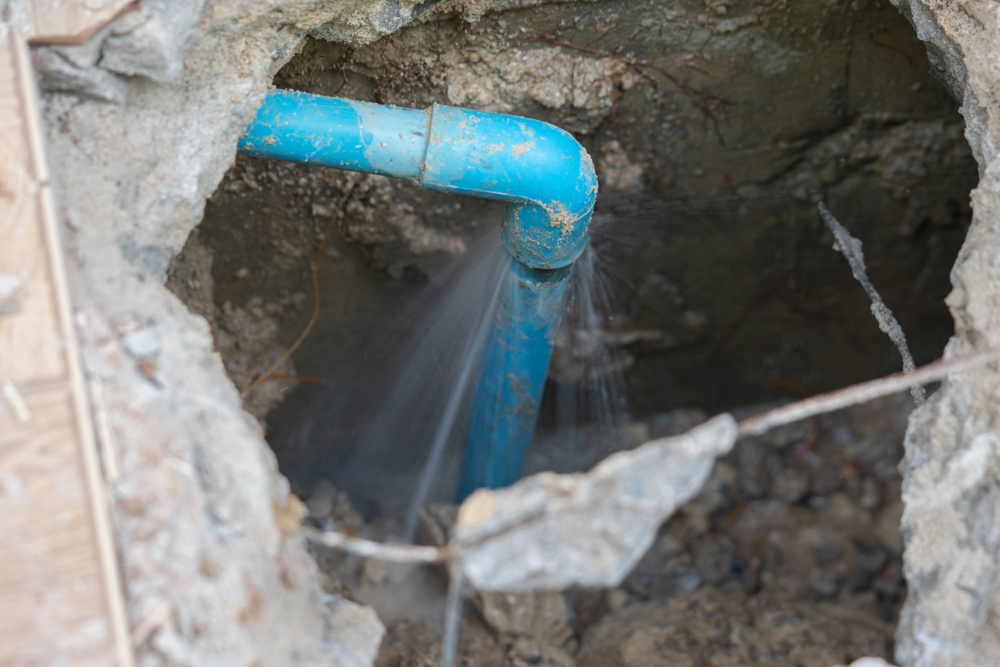Six Proven Ways to Identify Covert Water Line Leaks Stealthily
Six Proven Ways to Identify Covert Water Line Leaks Stealthily
Blog Article
Are you currently hunting for facts and techniques around Leaking water lines?

Early detection of leaking water lines can minimize a potential disaster. Some tiny water leaks may not be noticeable.
1. Take A Look At the Water Meter
Every house has a water meter. Inspecting it is a guaranteed manner in which assists you discover leakages. For beginners, shut off all the water resources. Ensure no person will certainly purge, utilize the tap, shower, run the washing machine or dishwashing machine. From there, go to the meter and also watch if it will certainly transform. Since nobody is using it, there must be no movements. If it moves, that suggests a fast-moving leak. Similarly, if you spot no changes, wait an hour or two and also inspect back once more. This implies you may have a slow leak that could also be below ground.
2. Inspect Water Intake
If you spot sudden adjustments, despite your usage being the very same, it indicates that you have leaks in your plumbing system. An abrupt spike in your expense indicates a fast-moving leak.
A steady rise every month, also with the very same practices, shows you have a slow leakage that's additionally gradually intensifying. Call a plumber to extensively examine your home, especially if you really feel a cozy location on your floor with piping underneath.
3. Do a Food Coloring Examination
When it comes to water intake, 30% comes from bathrooms. If the shade somehow infiltrates your dish throughout that time without flushing, there's a leak in between the storage tank as well as bowl.
4. Asses Outside Lines
Do not forget to inspect your outside water lines as well. Ought to water seep out of the link, you have a loose rubber gasket. One little leak can waste tons of water and spike your water bill.
5. Analyze the scenario and examine
Property owners need to make it a behavior to examine under the sink counters as well as also inside closets for any type of bad odor or mold and mildew growth. These 2 warnings suggest a leak so prompt interest is called for. Doing routine inspections, even bi-annually, can save you from a significant trouble.
If you know your home is currently old, keep a watchful eye on your heaters, hose pipes, pipelines and so on. Look for stainings as well as deteriorating as most pipes and devices have a life span. They will additionally naturally weaken due to damage. Don't wait for it to rise if you presume leaking water lines in your plumbing system. Call a professional plumber right away so you do not wind up with a horrible mess in your home.
Early detection of dripping water lines can mitigate a potential catastrophe. Some small water leakages may not be noticeable. Examining it is a guaranteed means that aids you find leakages. One tiny leak can lose bunches of water as well as increase your water bill.
If you suspect leaking water lines in your plumbing system, don't wait for it to rise.
How to Know If Your Home Has a Hidden Leak
Water Meter Reveals Inexplicable Water Usage
If you’d like to test whether or not there’s a leak somewhere in your home, you can do this using your water meter. Here is how to conduct the test:
Don’t use any water in your home for at least 30 minutes; this also means not turning on faucets or water-using appliances.
Go outside, and check your water meter for activity.
If your water meter shows that there was activity, even though no one was using any water, this proves that there is a leak in your home.Visible Mold or Mildew Growth
Leaks behind walls create moist, dark environments that allow mold and mildew to grow and thrive. Eventually, you might see mold growth forming on the wall closest to a hidden leak.
If mold is growing in an area that receives a high amount of moisture, such as a bathroom, it may simply be an indication that better ventilation is needed. However, if you see mold growth on a wall or the ceiling in an area where you would not expect, you probably have a hidden leak.
Musty, Mildew Odor
Sometimes you might not be able to see the mold or mildew that is growing as a result of a leak. However, the smell can give the problem away just as easily. If you catch a whiff of something musty, there’s a good chance that old water is collecting somewhere in your home that you can’t see.
Stained/Warped Walls, Ceilings, or Floors
When your home soaks up water, a variety of red flags can become visible, including ceiling stains, bubbling drywall, warped walls, and sagging floors. While these issues can be caused by excess humidity, they can also be signs that a pipe or plumbing connection has started leaking behind your walls.
Inexplicably High Water Bill
After a while, you get a general sense for what your water bill should be. If you own a pool or sprinkler system, your bill will tend to be higher during summer. However, if you receive a water bill that seems especially high, and you can’t figure out what caused it, then you may have a hidden leak somewhere that’s increasing your bill.
https://www.plumbingjoint.com/blog/2019/july/how-to-know-if-your-home-has-a-hidden-leak/

I was brought to that report on Leaking water lines through someone on another domain. Are you aware of somebody else who is excited about Locating water leaks? Take a moment to promote it. Thanks a lot for your time. Kindly pay a visit to our website back soon.
Get Your Estimate Now Report this page